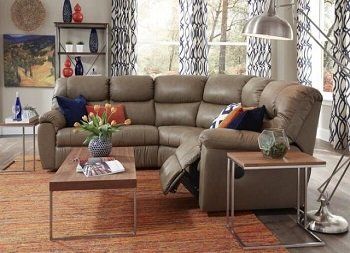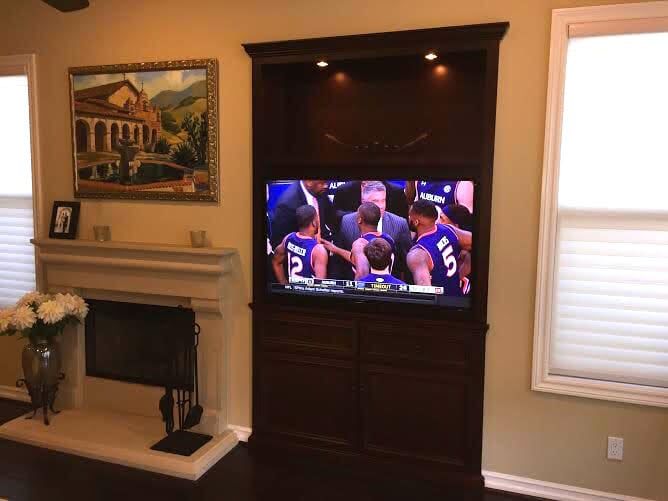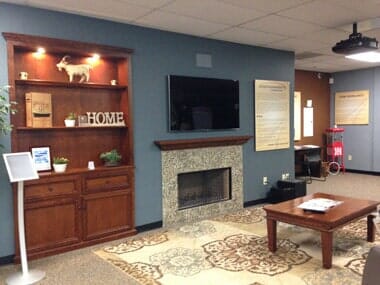real hardwood, convection cooling designed for audio and video components
Custom Cabinet Design
Custom Entertainment Cabinetry in Carlsbad, California
The Custom Cabinet Process
We have a professional design consultant visit your home for a free in-home consultation, discuss the project in all details, take all measurements and determine with you the audio/video components for the project.
Based on this discussion we create and send you the initial cabinet design and an initial price quote within one week.
After discussion and any changes we generate full color manufacturer production renderings for your approval and final sign off.
We then work with you to schedule your installation of the new cabinet and any TV and A/V installation equipment associated with the cabinet. This will usually be within six weeks of your final sign off so you can update your home quickly.
Cabinet Gallery
Overview
- Customized to match your room’s decor, color, and space.
- Solid hardwood construction ensures quality and peace of mind durability. We do not use veneer, melamine or soft woods.
- Durable, catalyzed conversion varnish finishes, perfect for homes with kids.
- Convection cooling using a passive ventilation system that eliminates the need for fans and prolongs the life of electronics.
- Cabinet design customized to work w/ Mounted TV and all structural, cable, and wire-path requirements.
- 6-week turn around from final rendering approval.
Structure & Durability
There is a significant amount of labor cost that goes into the cabinet. Many cabinet makers and furniture builders unfairly mark up the higher grade woods, when in fact there’s not really any additional labor. The result is that many people are sold cabinets with wood face frames, factory made doors w/ a melamine box structure and melamine shelves. Melamine does not do well with heat. It warps and does not hold fasteners very well. In addition, AV equipment can get very hot and some of the equipment can be fairly heavy, a bad recipe for longevity for a cabinet shelf. It starts with bowing and eventually ends with the cabinet shelf splitting in half or bowing enough that it slides off the shelf pins. A cabinet should be made of wood and preferably hard wood and the shelves should be vented.
Hardwood is commonly referred to as any wood above the hardness of balsa and pine. In reality, woods are graded scientifically based on their typical hardness and density. Usually hard woods grow slower and therefore are more expensive. Some are referred to as exotic hardwoods which means you can expect to pay exotic prices. We recommend using hardwoods for a hardness factor of 100 or higher such as maple, oak, cherry, mahogany and walnut. Many cabinet makers and builders will refer to Alder and Beech as hardwoods, when they really are not.

CUSTOM CABINETRY
You dream it, we can make it!
No settling for a cabinet that almost fits!
No Particle Board!
We recommend a hardwood cabinet with a catalyzed finish which we guarantee for the life of your home.
No Fan Required
When installing AV components in cabinetry you need convection cooling to avoid overheating.
Inner Beauty
Inner drawer & cabinet surfaces finished along with soft close doors and drawers create a high quality feel.
Inner Strength
Structural panels to mount TV's and avoid the "cave affect" & allow fill motion mounts that can pivot without losing the side of the image in the cabinet.
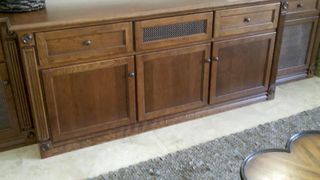
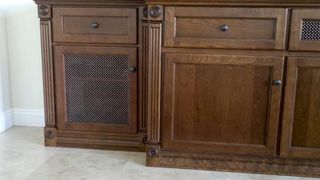
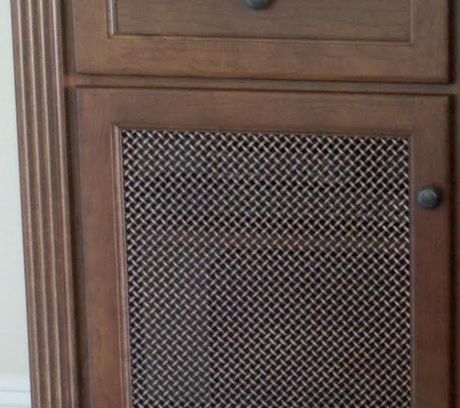
Hardwood Comments
Maple
– low grain visibility, wide grain pattern, can range from pink to white to yellow. If you’re painting cabinet or preferably using a dark solid color stain with a catalyzed finish, you’re not going to see the wood grain much so save the money and use a Maple. Our best seller.
Cherry
– high wood grain visibility, moderate to wide grain pattern, base wood can be white to pink. Very popular.
Oak
– very high wood grain, moderate to narrow grain pattern
Mahogany
– hard, narrow wood grain pattern, fairly consistent base wood color. If you like a rustic look with some distressing, mahogany is our favorite.
Walnut
– very hard, moderate to wide grain pattern.
Ultimately, you should look at stained wood samples that are “true” hardwood, then you should not have a hard time figuring out which one is best for you. Keep in mind that daylight looks different than artificial light. Hold samples against the wall looking straight at it, not looking down at it, when determining what looks best. Additionally, hold samples against carpeting and flooring choices to make sure it looks right. Do not pick color independently from color swatches/chip and then pick the wood separately. You should make your decisions from specific wood samples stained to the color you want as every wood takes colors differently. If you do a custom color match, pay a small fee to be credited back toward your job, to have a sample made up you can approve (we charge $100 which is applied to the cabinet purchase.
Finally, on durability we recommend soft close doors and drawers. Slamming is one of the things that shortens the life the life of the hinges and screw holes and besides it just looks cool. Soft close hinges by their very nature are a little heavier duty.
Heat Management
The key to ensuring a cabinet does not over heat, is designing a cabinet to be self cooling or what we call convection cooling. This is not achieved with fans, in fact, a properly designed cabinet can have lots of heat producing equipment and still effectively cool itself without fans.
As you most likely know, hot air rises. It rises until it hits a surface that stops it, then it spreads across that surface. In a cabinet with AV equipment, the equipment is like the big torch on the hot air balloon. It causes the air to rise inside the cabinet enclosure. As most cabinets do not have built in ventilation, the hot air is trapped in the cabinet and the heat can build up very quickly causing the equipment to shut down due to over heating.
The key is airflow. Now imagine that was an air exit point at the top of the cabinet. You could put your hand over it and feel heat, but that still won’t cool the cabinet because for hot air to escape cool air needs to enter. By having a vent at the bottom of the cabinet and a vent at the top, the electronics heat up the air, the hot air rises and pulls in cool air at the bottom allowing the hot air to exit. The hotter the equipment the faster the flow and you create a self cooling or convection cooling cabinet. The key is to properly design this venting system into your cabinet in a way that no one can tell it is vented. That’s what we do and it is ingenious. Even when looking at our cabinet, people can rarely figure out how it works. We’re that good! Schedule a cabinet consultation and we will explain in further detail.
Functional Design
Effective design to create a beautiful cabinet for your home along with the functional design elements to enhance it effectiveness as an entertainment system. Given our Audio/Visual expertise we work with you to ensure that the appropriate functional design elements are incorporated as well. Functional design elements include:
Proper mounting for the TV in cabinet. Correct height, angle, adjustable options and proper space around the TV for effective ventilation.
Drawers designed for effective access and storage of CD’s and DVD’s as appropriate.
Sufficient space, depth and height, for the AV equipment, receiver, cable box, Blu Ray player, etc. There needs to be enough space for all of the wiring, that the equipment is easily serviceable and there needs to be effective ventilation around the equipment.
Design of lighting for the cabinet, use of glass shelves with wood trim in the display area are all important points of discussion and design.
Built in design for future flex space as might be required in the cabinet.

